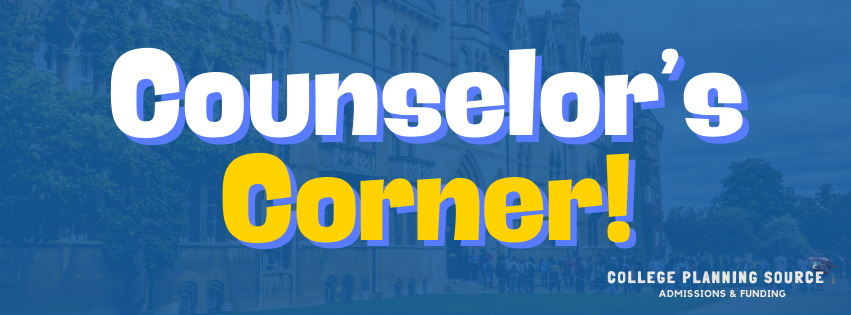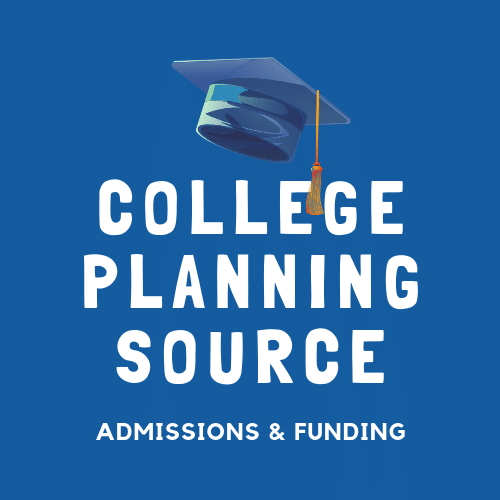-
College Applications
- Admissions Interviews
- Application Calendar
- Brag Packets
- Common App Personal Statement Essay
- Common Application
- CSU Application
- Essay Brainstorming
- Institutional Applications
- Mid-Year Reports
- Optional Supplements/ Portfolios
- RD/EA/REA/ED Deadlines
- Sending SAT / ACT / AP / IB Scores
- Supplemental Essays
- UC Application
- UC Personal Insight Questions
- Letters of Recommendation
- Sending Transcripts
- Honors Programs at Colleges
- How to Create a Balanced College List
- Securing Letters of Recommendation for College Applications
- The Pre-College Application(s) Checklist
- Understanding Early Action, Early Decision, and Restrictive Early Action: Making the Right Choice
- How to Successfully Complete Your Self-Reported Academic Record (SRAR)
- 13 Ways We Can Detect AI in College Essays
- 8 ways to approach leveraging AI in the essay writing process while keeping it authentic to you
- Common words used in AI-generated college admission essays
- Show all articles (11) Collapse Articles
Navigating the Brainstorm: A Student’s Guide to College Essay Preparation
Embarking on the journey of college admissions, the essay emerges as a pivotal element, reflecting a student’s personality, aspirations, and intellectual curiosity. The challenge, however, lies in the initial phase of brainstorming, where ideas must be nurtured and given direction. This article serves as a comprehensive guide for students on how to effectively brainstorm and prepare for their college essays, transforming a daunting task into a journey of self-discovery and articulation of thought.
1. Understand the Prompt
The first step in brainstorming for your college essay is to thoroughly understand the essay prompt. Colleges often seek to understand who you are beyond your grades and test scores. Reflect on what the prompt is asking you to share about yourself. Is it asking about your personal growth, a challenge you’ve overcome, or perhaps it’s open-ended, allowing you to share something significant about yourself? Grasping the essence of the prompt is crucial before you begin to brainstorm ideas.
2. Self-Reflection
Begin with introspection. Take a moment to reflect on your experiences, achievements, challenges, and what you’re passionate about. Consider aspects of your life that have shaped you—these can be moments, people, or even books and projects that have left a lasting impact. Creating a list of these elements can be incredibly helpful. Ask yourself questions like:
- What experiences have been transformative for me?
- What challenges have I overcome, and what did I learn from them?
- What am I passionate about and why?
This process of self-reflection is invaluable in identifying topics that are not only meaningful to you but will also resonate with your readers.
3. Mind Mapping
With your reflective notes at hand, engage in mind mapping. This technique involves visually organizing your thoughts around your central idea or theme. Place your central idea or theme in the center of a page and draw branches to other ideas, experiences, or qualities about yourself that relate to it. This visual representation of your thoughts can illuminate connections between different aspects of your life and help you identify a coherent theme for your essay.
4. Free Writing
Free writing is a liberating approach to brainstorming. Set a timer for 15-20 minutes and write continuously about anything that comes to mind when you think about the essay prompt. Don’t worry about grammar, structure, or even making sense at this stage. The goal is to get your thoughts out and explore different angles of your story. After the time is up, review what you’ve written to see if there are any compelling ideas or narratives that emerge.
5. Seek Feedback
Discuss your ideas with teachers, mentors, family, or friends. Sometimes, a fresh perspective can provide insights into your life and experiences that you might not have considered. Feedback can also help refine your ideas, ensuring they are clear, engaging, and reflective of who you are.
6. Narrow Down and Focus
After exploring various ideas, it’s essential to narrow down your focus. Choose an idea that feels authentic and offers a deep insight into who you are. Remember, the quality of reflection and personal insight in your essay is more important than the breadth of topics covered.
7. Create an Outline
Before diving into writing, create an outline based on your chosen idea. An outline will help you organize your thoughts and ensure your essay has a clear structure, including an introduction, body paragraphs that explore your theme, and a conclusion that ties everything together.
Brainstorming for your college essay can be a journey filled with self-discovery and creativity. By following these steps, you can develop a compelling and personal narrative that stands out. Remember, the college essay is an opportunity to showcase your unique voice and story. Embrace the process, and let your genuine self shine through.
Ready to get some guidance? Schedule a College Planning Assessment today!
Want college planning guidance delivered to you?
Sign up for our Counselor’s Corner Newsletter to receive helpful information and tips for
both parents and students on navigating the college admissions journey.




